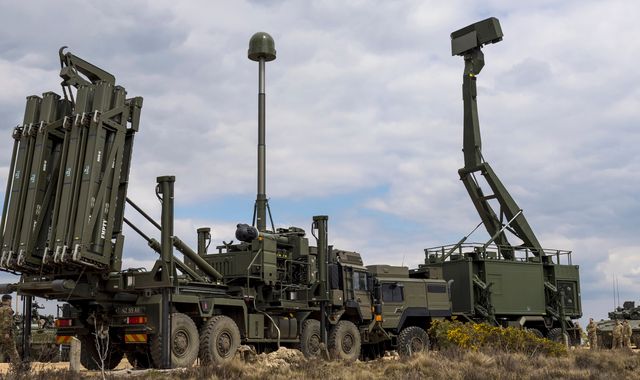
The Ministry of Defence (MoD) has announced it will buy £118m worth of air defence missile systems for the British Army.
But will this new purchase protect an increasingly vulnerable UK from attack, and why now?
For more than 50 years, the British Army relied on the Rapier air defence missile system to protect deployed forces.
In 2021, that system was replaced by Sky Sabre.
The new system is mobile, ground-based, and designed to counter various aerial threats, including fighter aircraft, attack helicopters, drones, and guided munitions.
It's known for its speed, accuracy, and ability to integrate with other military assets, including those of the Royal Navy and Royal Air Force (and NATO).
What is the Land Ceptor missile, and why do we need more of them?
Sky Sabre includes radar, command, and control capability and - most importantly - a missile to intercept incoming threats.
The Land Ceptor missile weighs around 100kg, has a 10kg warhead, and can intercept threats out to around 15 miles (25km), making it around three times more effective than the Rapier system it replaced.
When the MoD made the decision to replace the Rapier system, the global threat environment was very different to that experienced today.
Since the end of the Cold War, the UK has been involved in expeditionary warfare - wars of choice - and generally against less capable adversaries.
So, although the Land Ceptor missile is very capable, defence planning assumptions (DPAs) were that they would not need to be used in a serious way, commensurate with the threat.
However, as the Russian invasion of Ukraine has demonstrated (as has the series of Iranian attacks on Israel), significantly larger stockpiles are required against a more capable enemy.
Is the UK vulnerable to missile attack?
In short, yes. Although the Land Ceptor missile does provide an excellent point-defence capability, it is not an effective counter to ballistic or hypersonic missiles - the Sea Viper mounted on Royal Navy Type 45 Destroyers using the Aster 30 missile has that capability.
In the Cold War, the UK had Bloodhound missiles deployed around the UK to provide a missile defence capability, but as the perceived risks to the UK abated following the collapse of the Soviet Union, UK missile defence fell down the priorities for the MoD.
Read more from Sky News:
Trump's been made to look weak
Fight to redraw America's political map
Although the radar based at RAF Fylingdales forms part of the Ballistic Missile Early Warning System (BMEWS), and can detect incoming threats, the UK no longer has an effective interceptor to protect critical national infrastructure.
Instead, the UK relies on the layered defences of European allies to act as a deterrence against attack.
In the near term, this timely order for Land Ceptor missiles doubles the British Army's tactical capability.
However, as the conflicts in Ukraine and the Middle East have demonstrated, ballistic (and increasingly hypersonic) missiles are being produced in increasing quantity - and quality.
Without significant (and rapid) investment, this critical gap in national military capability leaves the UK vulnerable to attack.

(c) Sky News 2025: Britain is buying new air defence missile systems - but can they protect us?


 It's been a confusing week - and Trump's been made to look weak
It's been a confusing week - and Trump's been made to look weak
 Shoreham air crash: Families mark 10 years since one of UK's worst airshow disasters
Shoreham air crash: Families mark 10 years since one of UK's worst airshow disasters
 Israel to continue with Gaza City offensive despite talks to free Hamas hostages
Israel to continue with Gaza City offensive despite talks to free Hamas hostages
 Why Germany's top football league is turning to this man
Why Germany's top football league is turning to this man
 Government struggling to reduce migrant hotel use as asylum claims hit record level
Government struggling to reduce migrant hotel use as asylum claims hit record level
 New dinosaur named after record-breaking yachtswoman
New dinosaur named after record-breaking yachtswoman
 Erik Menendez, jailed for 1989 murder of parents, denied parole
Erik Menendez, jailed for 1989 murder of parents, denied parole
 At least 17 dead in Colombia after car bombing and helicopter attack
At least 17 dead in Colombia after car bombing and helicopter attack




